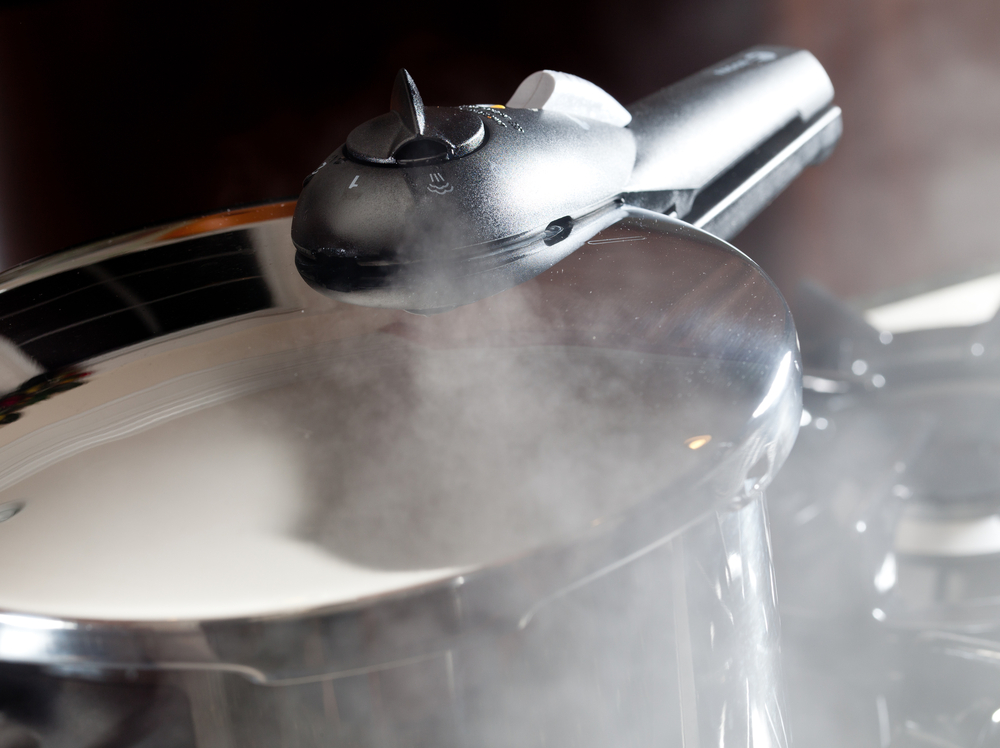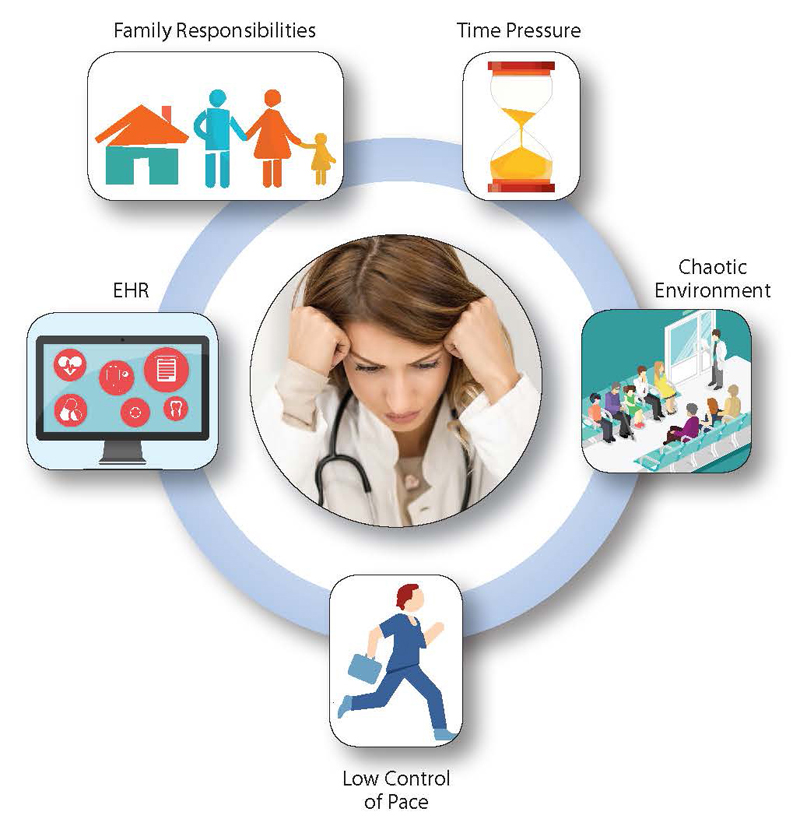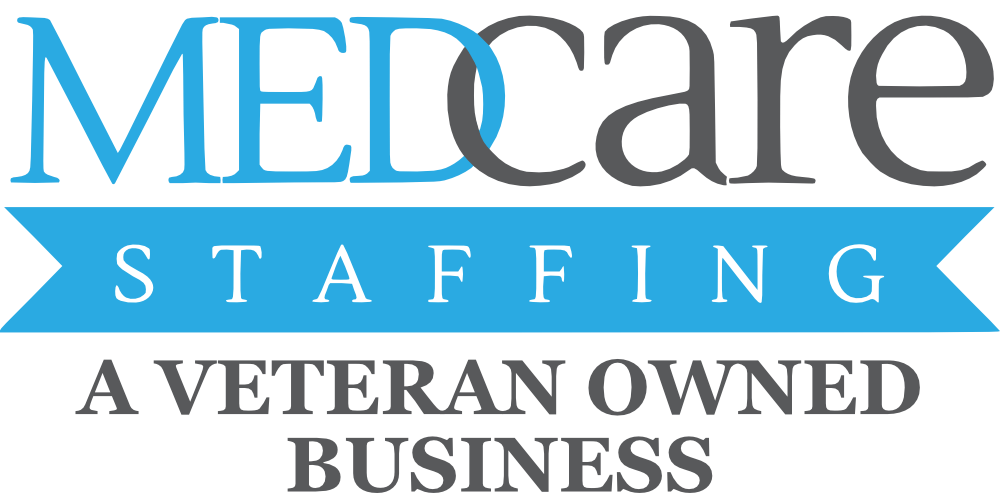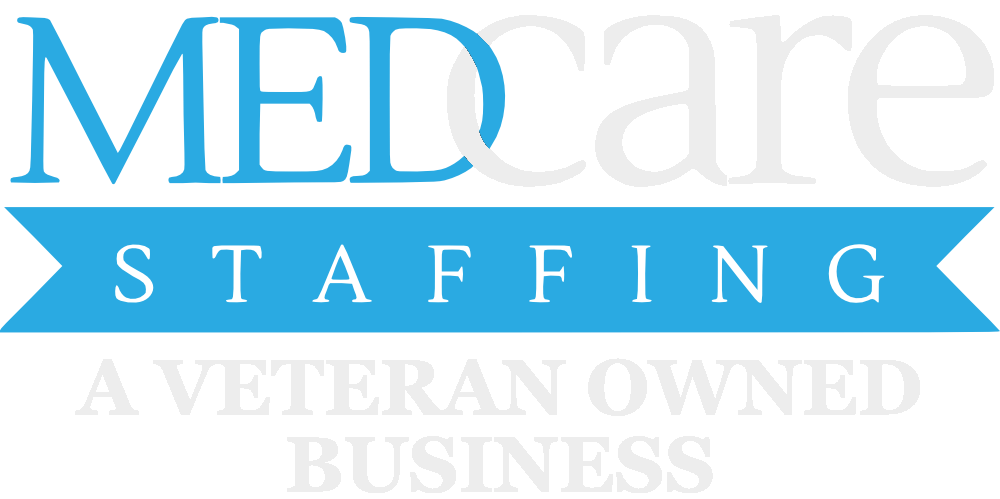
It is a typical day for Dr. Green, as she arrives at her large institution’s urgent care department. She has decided to arrive an hour early, 7:00 AM instead of her usual 8:00 AM, to finish her charting from last night’s shift. Normally, she tries to keep up with her charting on EMR (Electronic Medical Record), but last night was especially hectic as two doctors called out sick. The last minute acute abdominal case and sickle cell crisis patients who arrived three minutes prior to closing kept her working well past midnight. Since she lives 110 miles away from work, she ends up spending many nights at hotels, as she is too exhausted to drive back home to her family. This morning, she is on a mission to finish charting and responding to outstanding emails, not to mention her administrative tasks. She is happy because she will finally be able to return the two missed calls from her husband. He should be up by now, she thinks, and cannot wait to say good morning to him and wish him a good day.
The Pressure Cooker

Before she has a chance to place coffee and breakfast on her desk, she is met by a triage nurse frantically explaining how a patient walked into the triage booth with bloody clothes requesting help after being stabbed during an altercation. Dr. Green drops her coat, scarf, and breakfast and springs into action. By the time the stabbing victim is stabilized, and hospital bound, she has nine patients on her queue who need medical attention. Three patients are already roomed, one of which swings the exam door open and begins yelling ,cursing, and threatening to sue “the incompetent doctor that doesn’t give a damn about sick people.” Dr Green checks all three patient charts, reviewing their past medical histories and their reason for today’s visit. The patient yelling obscenities has checked in for migraine treatment. Her list of medication allergies include six non-narcotic medications used to treat pain and migraine headaches. Also, there is an eight-year-old child in the adjacent room with complaints of vomiting, fever, and abdominal pain.
Dr Green takes a deep breath and springs into action.
Meanwhile, in the 3rd exam room sits a twenty-nine year old woman with her four year old daughter, who has checked in to have her child examined for signs of child abuse, after spending the weekend with her father two weeks ago. She did not seek care sooner because she did not have time to make an appointment. She also requests a full written report that she can show her divorce attorney.
Tired from having slept only five hours and hungry from having skipped breakfast, Dr. Green decides to evaluate the eight-year-old patient suspected of acute appendicitis. As she walks past the migraine patient’s room who is shouting into her cell phone, she hears the patient say, “be careful in the parking lot tonight.” Dr. Greene suspects the patient is referring to her. She feels tension build-up in her temporomandibular joints.
Before she can attend to her first patient of the day, she has been shouted at, cursed at, and threatened.
Her charts from last night are still not done and a myriad of emails have not been answered, despite cutting back on her sleep to arrive early to complete her administrative tasks. She works in a department dubbed “the trenches” or “the pressure cooker” by other departments in her large organization because daily life for her and her colleagues often feels like a battle in the trenches. During the years she is worked there, multiple staff members have taken medical leave due to stress, depression, heart palpitations, and a host of gastrointestinal and musculoskeletal illnesses. A colleague has decided to apply for permanent disability due to health issues. Another previously well accomplished and respected doctor in the department is in rehab for prescription drug abuse and dependence. Many doctors have simply quit.
Unfortunately, Dr. Green’s experience is not uncommon and days like these have become the norm, leading to a never-ending cycle of emotional and physical exhaustion. This never-ending occupational stress has resulted in an epidemic of physician and medical provider burnout.
What Constitutes Physician Burnout?
To understand this occurrence better, we must know what “Burnout” actually means. According to the World Health Organization, burnout is an occupational syndrome where the medical provider suffers from emotional and physical exhaustion. Typically, there is a sense of cynicism or negativity related to his/her job. Physicians experiencing burnout will often grapple with a lack of personal sense of accomplishment. They will distance themselves from the offending cause, in this case, their work and, most likely display a marked loss of interest in their work to avoid further stress.
Additional Signs of Burnout
- Feeling drained and exhausted even when not working.
- Fatigue that does not respond to adequate rest, sleep, or even time off.
- Feelings of helplessness.
- Feeling trapped in one’s current circumstances.
- Changes in appetite and sleep.
- Procrastination and loss of motivation.
- Withdrawing from, and isolating from, work functions, family, and friends.
- Physical manifestations, such as increased muscle aches, headaches, gastrointestinal disturbances, and even lowered immunity.
Who Is at Risk?
In a word, everyone, given the current environment. Burnout does not spare physicians in training either. In a survey, 25% of medical residents said they would choose a different career if given the chance. Almost half of Gen X physicians report experiencing burnout. Another survey revealed approximately 46-50 % of physicians exbibit at least one of the symptoms of burnout. Unfortunately, this malady has not improved since the World Health Organization defined burnout in 2018.

In 2020, 42% of physicians reported suffering from burnout. That number rose to 46% in 2021. To elaborate, the Medscape 2021 Physician Burnout and Suicide Report exposed an increase in this problem. Medscape surveyed 12,000 physicians across different specialties.
The results were tallied and reported in various statistical breakdowns with the six most significant findings described below:
- The highest rates of burnout were reported among Critical Care, Pulmonary Medicine, Neurology, Infectious Diseases, Rheumatology, Internal, and Family Medicine.
- Female physicians reported higher rates of burnout. Not surprising, since most female physicians carry added childcare and domestic responsibilities. Additionally, female physicians often end up caring for elderly and sick parents.
- Work settings can often contribute to burnout. According to the National Institute for Health Care Management Foundations, medical providers who work at hospitals, large integrated systems, outpatient community clinics, outpatient academic settings, and multispecialty group practices report the highest rates of burnout.
- Burnout is not due to Covid! In the 2021 Medscape survey, 79% of the physicians surveyed said their burnout started before the pandemic. The remaining 21% of physicians who reported experiencing burnout as a result of the pandemic cited factors such as lack of adequate PPE, stressful work conditions due to Covid cases and watching their patients die alone without their families to comfort them. Of those surveyed, only 8 % reported treating Covid patients a source of burnout, compared to 58 % citing too many bureaucratic tasks as a burnout source.
- Sources of burnout are not a result of treating patients. Top causes of burnout included bureaucratic tasks, as mentioned previously. Long hours at work, 37%. Lack of respect from administrators/employers, 37%. Another top cause of burnout was insufficient compensation, 32%. The next common source of burnout was the lack of autonomy or control over physician medical decision making, 28%. Next in the survey results was the everlasting increasing computerization of the medical practice, 28%. Lack of respect from patients was another cited source, 17%. Yet another source of burnout was increasing governmental regulations pertaining to healthcare delivery, 14%. Out of all the cited causes, only 8 % of those surveyed cited stress from patient treatment.
- The causes of burnout have remained constant year to year. Regardless of the pandemic, physicians have cited the ever-increasing bureaucratic tasks as a top contributing factor. This is not to say that the pandemic did not worsen this problem. But the cracks in the system were already there; Covid-19 just deepened the already existing angst and hopelessness among health care providers.
The Mental Health Toll of Burnout
Ongoing helplessness and frustration on the part of overwhelmed, underpaid, and disrespected physicians have led to increased rates of depression. Unfortunately, medical professionals tend to feel inadequate if they ask for help. Other factors keeping affected physicians in an endless cycle of depression, depersonalization, and guilt, are the fear of being judged harshly by peers and superiors if
they seek mental health services. Some even fear retaliation and damage to their reputation and careers
if they are found to be suffering from depression and anxiety. Unfortunately, the consequences of not
seeking help can lead to self-medication and even suicide. In fact, physicians are more than twice as
likely to fall victim to suicide than the population at large.
The Wide-Reaching Impact of Physician Burnout
The ability to care for and cure what ails our patients is a source of great personal satisfaction and joy for medical providers. However, regardless of good intentions, it has been shown repeatedly that burned out providers become less effective in their communication with their patients. When information exchange between patients and doctors is compromised, the quality of care given to patients also suffers. What is more, burnout coupled with the pressure of time constraints has been shown to jeopardize patient safety and increase unintentional errors in the delivery of care. It stands to reason that when doctors keep “a stiff upper lip” and push past their fatigue, they can ignore patients’ feelings and wishes in the process.
The adverse effects of burnout on quality medical care has been demonstrated in other countries as well
According to the Canadian Medical Journal, physician burnout decreased productivity, as more physicians call out sick, forcing remaining colleagues to treat a higher number of patients in a shorter amount of time, which led to an increase in medical errors.
Given this unsustainable scenario, one of two things happen. Either more physicians experience burnout and mental health problems, rendering them unable to provide the quality care patients deserve, or the remaining physicians choose to change jobs or careers in order to avoid burnout. Neither scenario is good for health care and will harm the overall health of our communities.

It would not be an exaggeration to say that our health care system needs help!
One way of improving health care is to start focusing on the wellbeing of healthcare providers. For example, if multiple surveys have shown that bureaucratic tasks take time away from the physician’s ability to focus on quality health care, shouldn’t administrators be held to task with regard to simplifying said tasks? Similarly, if long hours on EMR impact the time a medical provider has to interact with patients, shouldn’t we enable EMR to be user friendly and intuitive? In short, when we make physician health and wellbeing a priority, solutions can and will emerge.
Until positive changes occur in the delivery of care, medical providers ought to keep a few things in mind:
- Remember who you truly are. Who you were before you became a medical provider and where you’d be in life if you didn’t possess the knowledge and credentials you have today.
- On your worst days, try and remember why you chose your profession and know even the worst days are only 24 hours long.
- Remember that one of your greatest super-powers is remaining calm. Practice this elusive skill and you will immediately notice the positive impact on your patients, your team, and your wellbeing.
- Keep in mind, that on your worst days, you still possess the power to treat an asthmatic child who is gasping for breath, you have the power to safely lower your patient’s high blood pressure and high blood sugar. You have the power to calm nerves and to treat pain. You have the power to change the trajectory of your patients’ lives.
- Remain hopeful that many advances in medicine are headed your way which may be a game changer in how easily you can diagnose and treat a particular disease.
- Practice self-compassion. It is perfectly OK to set aside time to try new hobbies, make exercise a priority, plan for time away from work, and even time just to be alone and rest. Start planning before experiencing any symptoms of burnout.
- Incorporate diversity into your medical practice. Consider a salaried part time position while you scale back from private practice. Consider a sabbatical in order to branch out into non-clinical projects, such as teaching or research. Look into an interesting locum assignment either in your area or in another state or country. Locum assignments allow for a great deal of freedom and flexibility, while providing a chance to practice medicine in settings that are new to you.
- Consider stepping down from a leadership position that no longer gives your life meaning. Conversely, step up to a leadership role.
- Complete your CME requirements in other states and countries if feasible.
Above all, value your peace of mind and your health.
There is no one else quite as remarkable as you are.
To all health care superheroes, thank you for all that you do.
Ela Grigorian
Check out my blog at www.thevitaminchannel.com !!

